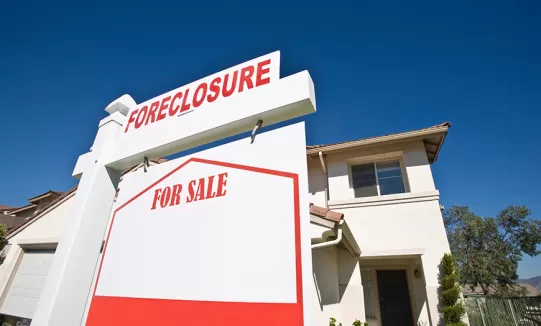Twenty percent. That’s long been the standard amount of down payment required to purchase a home. But 20% can be quite a hefty sum and for many of us (especially first-time buyers) it can put homeownership out of reach. Fortunately, you can purchase a home in Nevada with less than 20% down. (Cue upbeat, celebratory music.) Extra fortunately, Nevada Housing Division can help you come up with your down payment through our Home Is PossibleTM programs.
Unfortunately, this lower barrier to homeownership comes with some trade-offs. (Cue dramatic music.) If you put down less than 20%, your loan will come packaged with Private Mortgage Insurance, also known as PMI.
Why PMI exists
PMI is different from homeowner’s insurance, which is designed to protect the homeowner and is required by most mortgage companies.
PMI is all about protecting the bank in the event a buyer defaults on their mortgage and the home goes into foreclosure. This translates to an additional payment of .5 to 1% of the home loan each month, which can be a large chunk, depending on the size of the loan. While you can’t escape paying homeowners insurance, there are some shrewd ninja moves you can make to stop paying PMI.
Read: Introducing Our New Program for First-Time Buyers
Are you paying PMI? This one is easy. Take a look at your statement, which is broken out into principal, interest, taxes and insurance (homeowners and PMI, if applicable). It will even tell you exactly how much you’re paying each month.
How to kick PMI to the curb
The lender is required to remove the PMI once the loan balance drops to 78% of the value of the home, unless it’s an FHA loan, but we’ll talk about that a bit later. In Nevada, that loan balance could come down quicker because of our state’s crazy growth.
Nevada is the fasted growing state in the nation at 2.1% and that higher demand translates to higher home values. According to the latest S&P CoreLogic/Case-Shiller Indices, Southern Nevada prices were up 11% year-over-year in January 2019, more than double the national rate of 4.35%. And the rest of the state is not far behind. While the higher home values do create extra challenges for new buyers, it could be what gets current homeowners below that 78% equity mark.
Am I there yet?
Go on Zillow, or another online real estate estimator and see what it says your home is worth. Then divide the current value of your loan (what you actually owe right now) with that number and see what you come up with. If it’s 80% or lower, you might be able to get the PMI dropped from your loan. Please note that online estimators are not completely accurate, but they will give you a pretty good idea.
According to the Consumer Financial Protection Bureau, you have to meet certain requirements to remove PMI:
• You must request PMI cancellation in writing.
• You have to be current on your payments and have a good payment history.
• You might have to prove that you don't have any other liens on the home (for example, a home equity loan or home equity line of credit).
• You might have to get an appraisal to demonstrate that your loan balance isn't more than 80% of the home's current value.
If you meet these requirements, give your lender a call (you can find their phone number on your statement) and ask them about next steps. They’ll most likely send you an information packet outlining your options. The packet will explain how you request PMI cancellation and whether or not you need to pay for an appraisal.
“Every lender has different requirements though, so you need to talk to your actual servicer,” explains Stephanie Hanna, a senior loan officer with Synergy Home Mortgage. With Synergy, for example, buyers are required to get a current appraisal through one of Synergy’s third-party partners, at a cost of $300 to $600. Synergy requires a 75% LTV (Loan to Value), as opposed to 80%.
“Our approach takes the fluctuation in home values into account,” Hanna explains.
Should you refinance?
You certainly do not need to refinance to get rid of PMI, but there could be some scenarios where it makes sense.
- FHA Loans: The Federal Housing Administration (FHA) was created to help first-time homebuyers and this can be a good option for higher risk buyers, including those with a lower credit score. However, the risk they take comes with a price — FHA’s Mortgage Insurance Premium (MIP) cannot be removed without refinancing.
- Better Interest Rate: If your credit score has improved since you originally purchased your home, you might be able to refinance your loan at a lower interest rate. “We’ll take a look at your current payment and then recommend a refinance if it makes sense,” Hanna says. “But there’s no point in refinancing if your interest rate isn’t going to improve.”
Bottom line? Talk to your lender to find out what your options are and what makes the most sense for your family.
After the PMI
Once the PMI has been removed, you should have an extra couple hundred dollars each month. Party time! JK. We actually recommend a more long-term approach. Consider continuing to pay the same amount on your mortgage, as that extra money could take years off your loan. Or use your newfound riches to pay down higher interest debt, build an emergency fund or even improve your home.
If you haven’t already jumped into the world of mortgages, interest rates and PMI, the first step is to find a HIP-qualified lender who can discuss your options with you. They’ll let you know what programs you qualify for and how much house you can afford.


